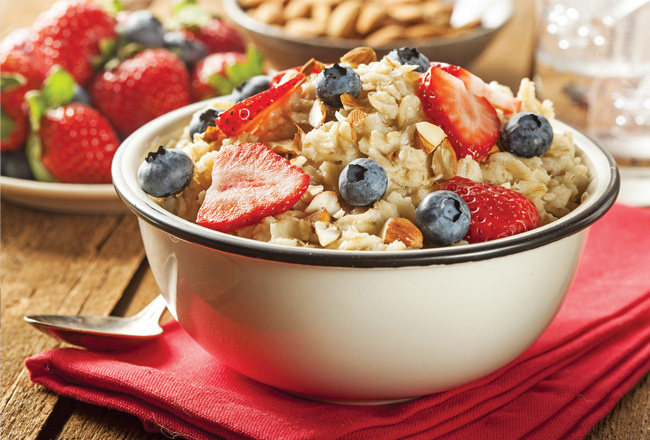DID YOU KNOW?
People living with Parkinson’s disease are at increased risk for malnutrition due to disease symptoms and medication side effects, such as decreased food appetite and intake, changes in swallowing ability, slowed digestion and absorption, and changes in bowel movements. Loss of smell, apathy and depression may also result in decreased food intake. In addition, energy expenditure may become dysregulated due to Parkinson’s related dyskinesias, tremor and rigidity. All these changes can result in unwanted weight loss.
If you have lost weight, or are eating less than 50-75% of your usual intake, it is important to seek the help of a Registered Dietitian Nutritionist who can work with you to safely increase food intake and adjust meals and mealtimes to align more optimally with medication schedules. If you are having difficulty chewing or swallowing, your physician will refer you to a Speech Language Pathologist for a swallow evaluation.
Nutrition Tips and Tricks
It is important to become aware of your eating patterns so that you can adjust portion size, meal times and optimize food choices for well-being.
- Try to eat several small meals per day. Aim for a 1/2 portion of protein and either a fruit, vegetable or starch.
- It is important not to rely on appetite or the feeling of being hungry. It is better to make a schedule for when and how much to eat.
- Plan for healthy, nutrient dense “mini meals” and avoid excess “junk foods.”
- Stock the fridge with easy to heat up items, small portions of ready-to-eat foods and healthy snacks.
- Enlist the help of family and friends to shop and prepare healthful “mini meals.”
- Enjoy occasional desserts, but avoid filling up on sweets.
Sample meal plan for 5-6 mini meals a day:
7:00 – 8:00 am:
- ½ cup of cooked rolled oats or steel cut oatmeal with berries and chopped nuts;
1 slice whole grain bread with 1 tablespoon almond butter; 1 scrambled egg and 1 slice toast
10:00 – 11:00 am:
- 6 oz Greek yogurt with 1 tablespoon of low sugar granola
- ¼ avocado, sliced radish, or cucumbers with 1 slice toasted sourdough bread
- Apple or pear slices and 2 tablespoons peanut or almond butter
1:00 – 2:00 pm
- ½ sandwich and 4 oz cup of soup
- 2 oz cheese, cut up veggies and 3-4 whole grain crackers
- Scoop of tuna, egg salad or chicken salad with a small whole wheat tortilla wrap
4:00 – 5:00 pm
- 2-3 oz poached salmon with sautéed spinach, garlic and extra virgin olive oil
- 2-3 small turkey meatballs with ½ cup pasta and marinara sauce, 1-2 stalks of cooked broccoli
- Roasted chicken, steamed asparagus or string beans with mashed sweet potato
6:00 – 8:00 pm
- 2 oz hummus and whole grain crackers
- 4 oz rice pudding with a ¼ cup stewed prunes or fruit
- ½ toasted English muffin and 1 oz melted cheese
References
Kacprzyk KW, Milewska M, Zarnowska A, Panczyk M, Rokicka G, Szostak-Wegierek D. Prevalence of Malnutrition in Patients with Parkinson’s Disease: A Systematic Review. Nutrients. 2022 Dec 6;14(23):5194. doi: 10.3390/nu14235194. PMID: 36501224; PMCID: PMC9738273.


